
- Home
- Altars
- Architecture
- Attire
- Bamboo
- Cities and Roads
- Elevation
- Fruits
- Lotus
- Markets
- Music
- Natural Resources
- Rice
- Rivers & Waterways
- Where is Vietnam?
Altars
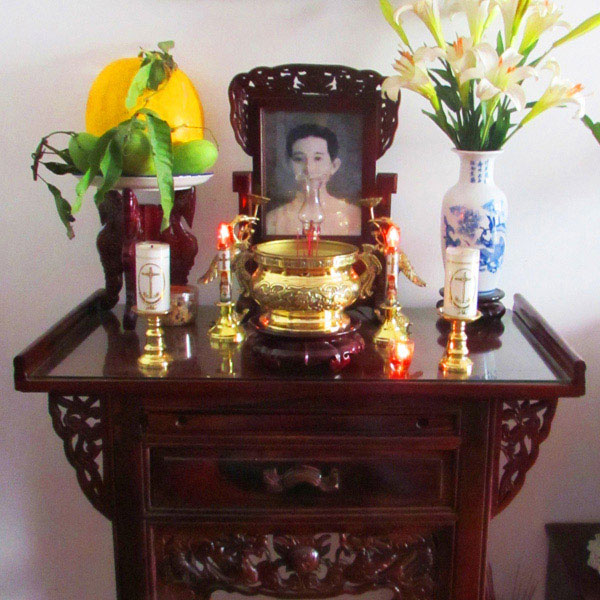
Nearly every home, office, and business in Vietnam has a small altar to honor ancestors. The altar usually includes an incense burner, at least one vase for flowers, a small oil lamp, and a place to make offerings of food, sweet treats and tea. Hanging next to the altar or sitting on the altar are photos of family members who have passed away. The lighting of the incense sticks and candles and the gifts of food are ways to honor and remember the ancestors. During Tet, the Vietnamese New Year celebration, the family altar is decorated with a special arrangement of fruits, and foods are left out for the ancestors. A special ceremony called the Kitchen God ceremony takes place 7 days before the new year and features a paper hat and shoes placed on the altar.
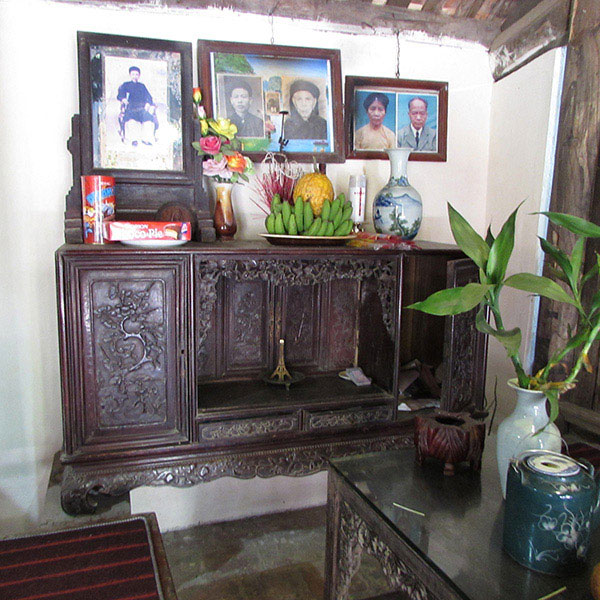
The altar is always given a special place in the household. A set of chairs and a low table or a plank bed are usually placed in front of the altar, and guests are invited to sit near the altar and drink tea when they visit.
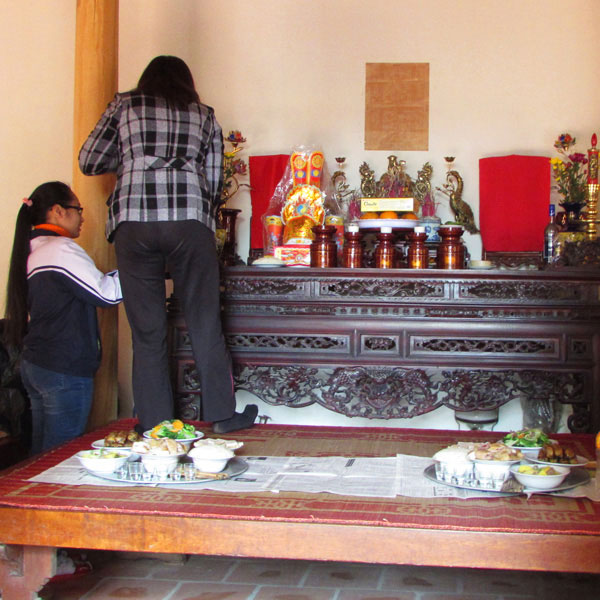
This family is preparing their altar for the Kitchen God ceremony. One week before the dawn of the new year, they prepare the altar for the Kitchen Gods who will give a report to the 'Jade Emperor' about the family. Because the family wants the report to be a good one to ensure luck and prosperity in the upcoming year, they put out special foods and a hat and shoes for the Kitchen Gods. They purchase a red carp fish and release it in a nearby river because legend says that the red carp will help the Kitchen Gods reach the Jade Emperor quickly and easily.
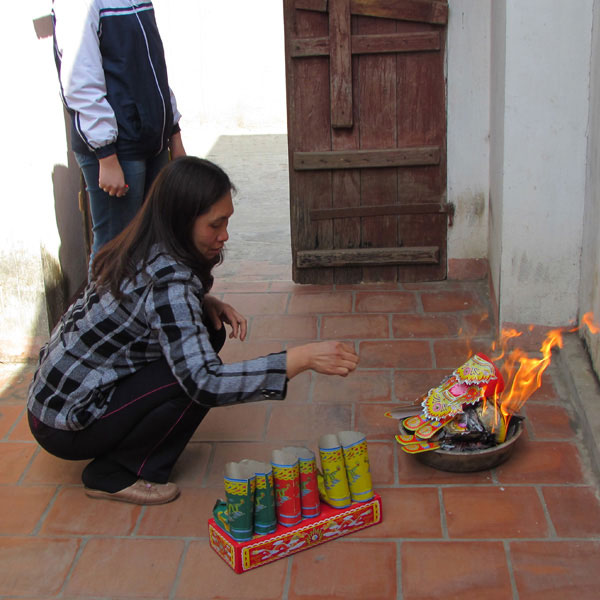
After preparing a special meal for the Kitchen Gods and leaving the meal out for at least 30 minutes, the family will burn the paper Kitchen God hat and shoes. Tradition in Vietnam says that there are three Kitchen Gods, two males and one female. After the Kitchen Gods have been sent on their way, the family enjoys a meal together.
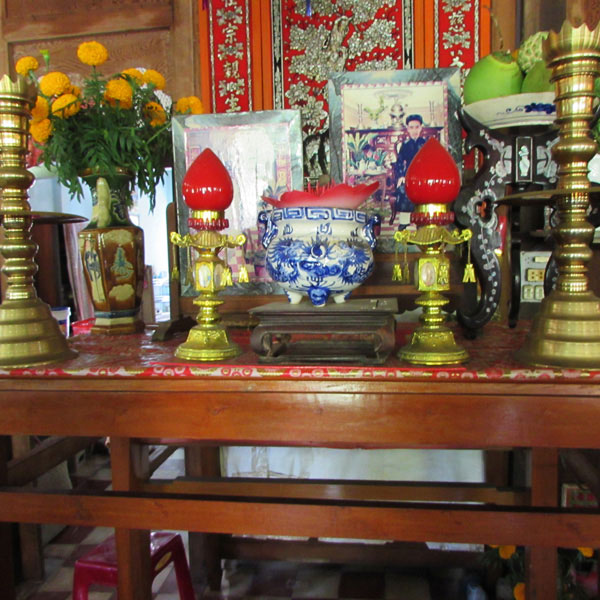
Although each family's altar is different, there are similarities. The incense burner is usually a round bowl made of brass or porcelain and ornately decorated. The bowl is filled with either sand or uncooked rice in order to hold the incense in place. The incense burner is usually placed in the center of the altar.
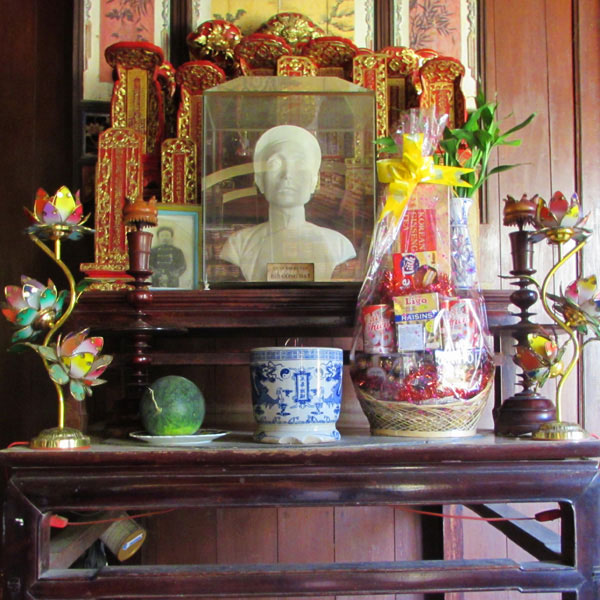
This community altar includes candlesticks made to look like the lotus flower. The lotus is the national flower of Vietnam. The basket to the right with a yellow bow and red papers is the special decoration for Tet.
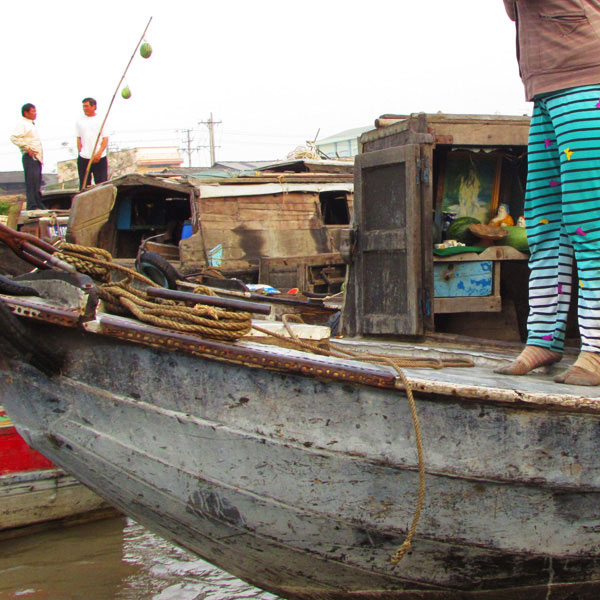
Even families who live on house boats have an altar on their boats. You can see the small altar here near the homeowner's knees.
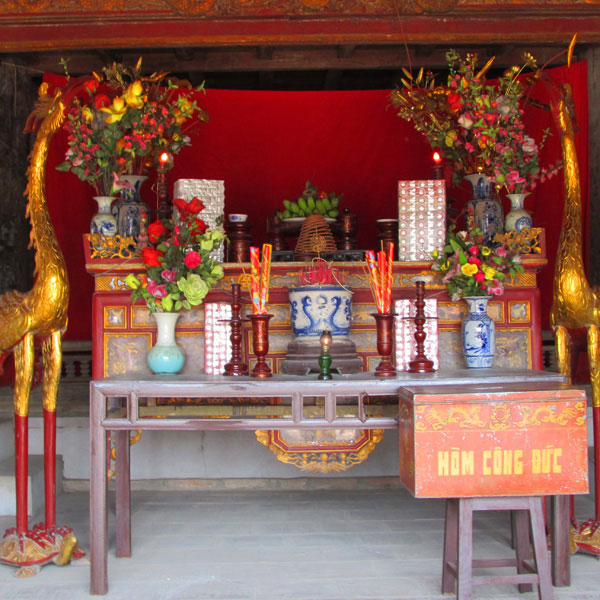
Community temples also decorate their altars for Tet.
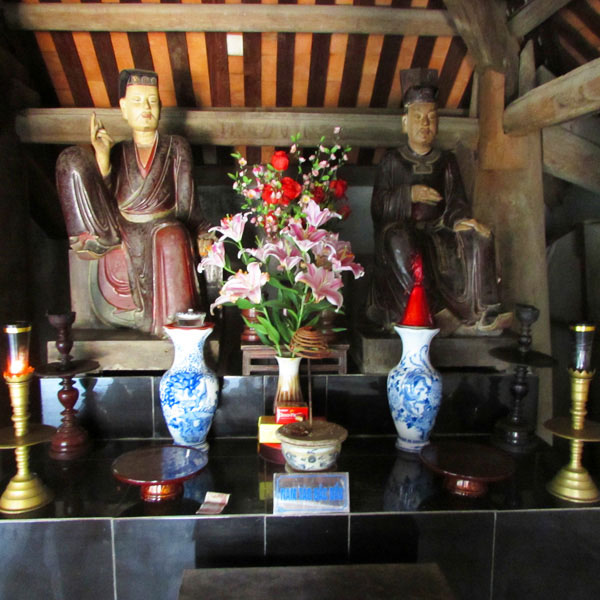
This temple, located in an ancient village outside of Hanoi, has many statues of Buddha.
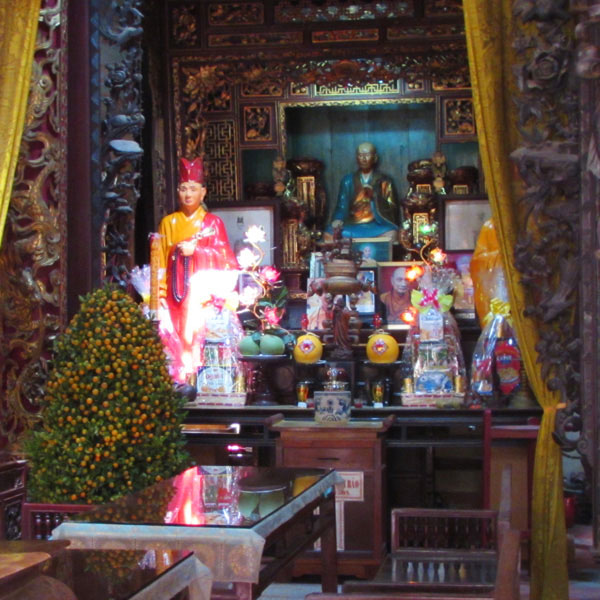
This very ornate altar is located in My Tho. The kumquat tree in the left hand corner is a special decoration for Tet.
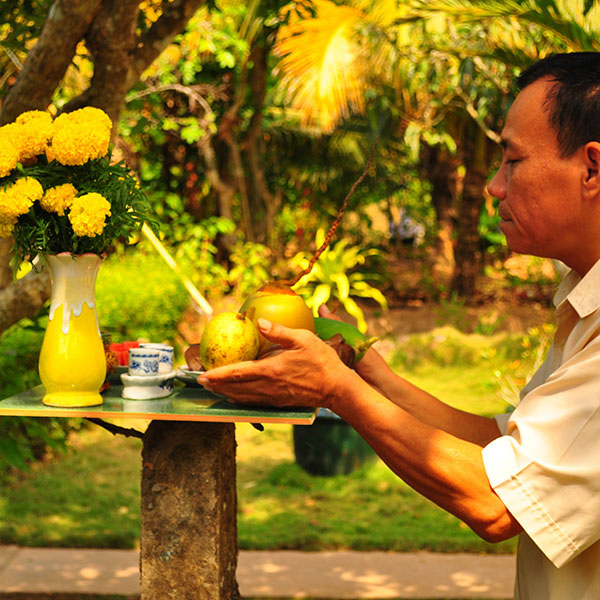
In preparation for the start of the new year, this man prepares a special offering of fruits, tea, and flowers. He lights a candle and says a prayer at this outdoor altar used especially in preparation for Tet.
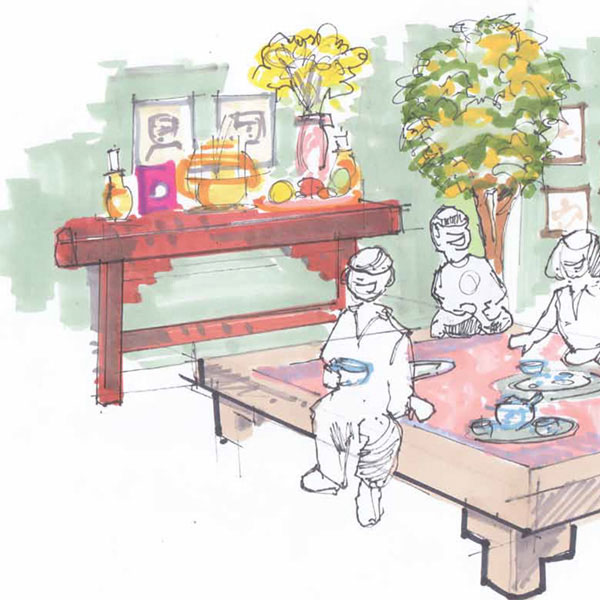
In the Voyage to Vietnam exhibition, there is a plank bed placed in front of the family altar which is decorated especially for Tet. See if you can find the 5 special fruits on a tray on the altar. Visitors are also invited to take their family photos near the beautiful altar.